Daniel Orr's Blog, page 21
June 6, 2024
June 6, 1944 – World War II: The Allies launch Operation Overlord, with 155,000 troops landing on the beaches of Normandy
On June 6, 1944 (also called D-Day), the Allied 21st Army Group launched Operation Overlord, the invasion of the French coast of Normandy. The operation was delayed by one day from its earlier planned June 5 because of a storm in the English Channel. A lull in the inclement weather encouraged General Dwight D. Eisenhower, over-all commander of Supreme Headquarters, Allied Expeditionary Forces (SHAEF), to proceed with the invasion. Meanwhile in northern France, the bad weather lulled German authorities into believing that no invasion would take place, and on June 6, at the time of the Normandy landings, many high-ranking German commanders were away from their posts and participating in military exercises elsewhere.
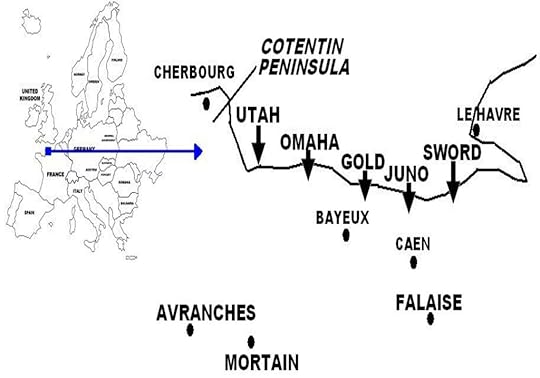
The invasion began with British and American parachute and glider units making overnight landings in Normandy on the flanks of the target area, and securing bridges, exit routes, and capturing other key objectives. In the early morning of June 6, Allied air and naval units launched a massive bombardment of the Normandy coast and the immediate interior, which was followed by the landing of the ground forces. With a massive supporting naval armada of some 7,000 vessels, including 1,200 warships, 4,100 transports, and several hundreds auxiliary vessels, Allied land forces ferried by amphibious landing crafts hit the Normandy coast at five points: in the western sector, U.S. forces in the beaches codenamed Utah and Omaha, and in the eastern sector, the British at the beaches named Gold and Sword, and the Canadians at Juno.
The British and Canadians established beachheads after encountering only moderate German resistance, while U.S. forces at Utah beach at the extreme right, facing the weakest resistance of all the sectors, also easily gained a foothold. At Omaha beach, U.S. forces met fierce enemy fire and suffered heavy casualties from the entrenched defenders occupying the high ground overlooking the beach. The Germans at Omaha Beach also comprised the veteran 352nd Infantry Division, the strongest formation in Normandy. Here, the Americans faced the real danger of being thrown back into the sea. The rapid landing of more troops and tanks, and more decisively, the bombardment of German positions by Allied warships and planes allowed the Omaha situation to ease by mid-day. By the end of D-Day (June 6), four of the five beachheads were secured, while Omaha was still being cleared and consolidated, and also still subject to distant enemy artillery fire. (Excerpts taken from World War II in Europe.)
June 5, 2024
June 5, 1940 – World War II: German forces launch Fall Rot (“Case Red”), the invasion of Paris and southern France
Background On May 26, 1940, the British High Command implemented Operation Dynamo, the Allied naval evacuation from Dunkirk, with the first troops numbering 28,000 being evacuated by ships to southern England on that day. Then, the Allies received a stunning blow when on May 27, Belgian King Leopold III asked the Germans for an armistice, and the next day, May 28, 1940, the monarch formally surrendered the Belgian Army. The sudden Belgian capitulation exposed the Dunkirk perimeter’s eastern flank, seriously jeopardizing the evacuation. However, fierce resistance by 40,000 French troops, the trapped remnants of the French 1st Army at Lille against four German infantry and three armored divisions (comprising 110,000 troops, 800 tanks) stalled the German advance that allowed 70,000 more Allied troops to escape to Dunkirk. But as a result of the 4-day siege at Lille, the French 1st Army was destroyed.
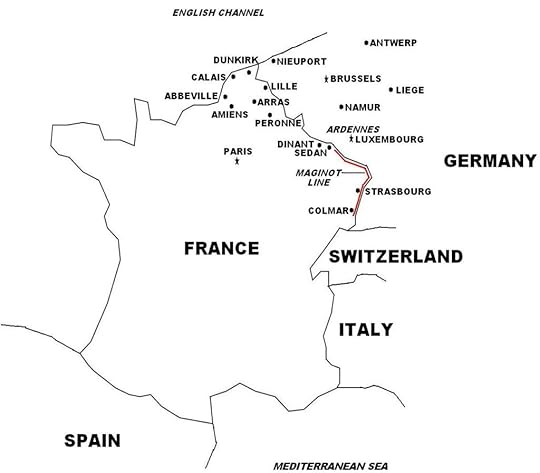 Battle of France
Battle of FranceThe Dunkirk evacuation, lasting from May 26 to June 4, 1940,was successfully carried out: under fierce, constant German air, artillery, andtank fire, and a gradually shrinking perimeter as the Germans broke through thedefensive lines, hundreds of small vessels, including privately owned fishingboats and pleasure craft from southern England,were used to assist ships of the British Royal Navy to evacuate Allied troopsfrom the harbor and beaches of Dunkirk. Of the 222 British Royal Navy vessels and 665other requisitioned boats that took part, 6 British and 3 French destroyers, 24smaller Royal Navy vessels, and 226 other ships were lost. Also, 19 other British destroyers weredamaged, as were over 200 other British and Allied vessels. On June 4, 1940, German forces broke throughthe last defense line and entered Dunkirk,capturing some 40,000 French troops who had failed to make the evacuation. In total, 331,000 Allied troops wereevacuated, of whom 192,000 were British and 139,000 were French. But the British Army left behind all itsheavy weaponry and equipment: 700 tanks, 45,000 trucks, 20,000 motorcycles,2,500 artillery pieces, and 11,000 machine guns.
Case Red TheGerman Army now turned its attention to the south, to the conquest of Paris and the rest of France. With 140 divisions (130 infantry and 10panzer) in a reconfigured Army Groups A and B (and Army Group C inside Germany facing the Maginot Line), the Wehrmachtmassed along a 600-mile front along the Somme and Aisne rivers stretching from Sedan to the Channel coast(the French Weygand Line). Facing theGermans were 64 French divisions comprising three Army Groups, including110,000 French soldiers who had been evacuated in Dunkirkbut were repatriated to Francevia Brittany and Normandy. Also arriving were two other Allied infantry divisions, one British andone Canadian, supplementing one British infantry and elements of one armoreddivision as well as Czech and Polish formations already in France, a combined total of 173,000troops.
The debacle in Belgiumgreatly depleted French military resources: France’s best units, comprisingover 60 divisions, were lost, as were elite tank formations and a considerablenumber of heavy equipment and weapons. However, increased moral and resolve swept through the remaining FrenchArmy: officers and men were fighting for France’s survival, supply andcommunication lines were closer, and army commanders and surviving units hadgained battle experience. GeneralWeygand implemented a “hedgehog” defense-in-depth network of mutuallysupporting fortified artillery positions, supported by armor and air cover,aimed at inflicting heavy losses to the attacking German forces.
On June 5, 1940, German forces launched Fall Rot (“Case Red”), the invasion of Paris and southern France. (Excerpts taken from World War II in Europe.)
June 4, 2024
June 4, 1944 – World War II: The Allies capture Rome
On June 4, 1944, U.S.forces entered Romeunopposed after the city had been vacated by the Germans. Adolf Hitler, whoordered the retreat, balked at another Stalingrad-type attrition battle in theItalian capital. Rome, which had been declared an “open city”and thus undefended, also had been subject to constant Allied airbombardment.
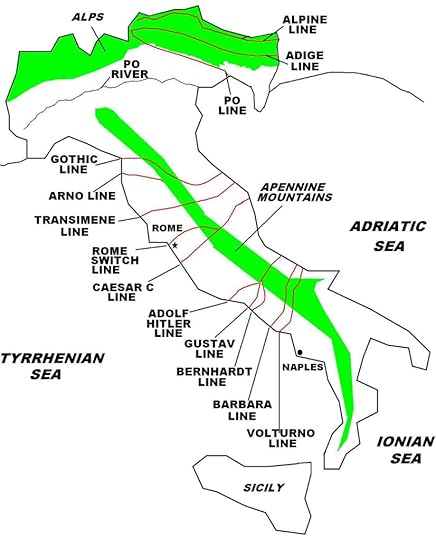 German strategy for the defense of Italy relied on the natural defensive features, particularly the Apennine Mountains which form a “spine” along much of the length of Italy, as well as the numerous rivers. To the north, by the time of the Allied attack on the alpine region in northern Italy, German defenses verged on complete collapse.
German strategy for the defense of Italy relied on the natural defensive features, particularly the Apennine Mountains which form a “spine” along much of the length of Italy, as well as the numerous rivers. To the north, by the time of the Allied attack on the alpine region in northern Italy, German defenses verged on complete collapse.Background On May19, 1944, a concentrated Allied offensive combining U.S. 5th and British 8th Armiesfinally breached the Gustav Line and the Monte Cassino hilltop was captured,forcing German 10th Army to fall back. Just days later, May 23, U.S. VI Corps at Anzio broke out from thebeaches and advanced northwest toward Rome, instead of attacking northeast forValmontone to cut off German 10th Army, as planned. This change in direction was ordered byGeneral Clark, U.S. 5th Army commander, who probably wanted his forces, not theBritish, to capture Rome, which was in defianceof orders from his superior, General Alexander, chief of all Allied troops in Italy. As a result, the Allies failed to encircleGerman 10th Army at the Gustav Line. German 10th Army escaped and, together with German 14th Army from Anzio, soon established new positions in northern Italy. The Allied planning had also placed Rome inside the American sector, and not the British;instead, the latter were tasked to bypass Romeand pursue the retreating Germans.
On May 23, 1944, the Allies broke through the last of thethree Winter Line positions, the Senger Line (renamed from Adolf Hitler Line). Meanwhile, elements of U.S. VI Corpsadvancing on Romewere stalled by strong German resistance at the Caesar C Line, but exploited agap and broke through on June 2, 1944. American units entered Romeunopposed on June 4, 1944, which had been vacated by the Germans on orders byHitler, who balked at another Stalingrad-type attrition battle in the Italiancapital. Rome, which had been declared an “open city”and thus undefended, also had been subject to constant Allied airbombardment. The glory attached tocapturing Rome, which had predominated throughout the Allied campaign, wasupstaged just two days later, June 6, 1944, when the Allies launched the muchmore strategically important Operation Overlord, beginning with the amphibiouslandings on Normandy aimed at the re-conquest of France and occupied WesternEurope, and ultimately the defeat of Germany.
June 3, 2024
June 3, 1940 – World War II: The Allies evacuate Dunkirk; German forces take control of northern France
On May 26, 1940, the British High Command implemented Operation Dynamo, the Allied naval evacuation from Dunkirk, with the first troops numbering 28,000 being evacuated by ships to southern England on that day. Then, the Allies received a stunning blow when on May 27, Belgian King Leopold III asked the Germans for an armistice, and the next day, May 28, 1940, the monarch formally surrendered the Belgian Army. The sudden Belgian capitulation exposed the Dunkirk perimeter’s western flank, gravely jeopardizing the evacuation. However, fierce resistance by 40,000 French troops, the trapped remnants of the French 1st Army at Lille against four German infantry and three armored divisions (comprising 110,000 troops, 800 tanks) stalled the German advance that allowed 70,000 more Allied troops to escape to Dunkirk. As a result of the 4-day siege at Lille, the French 1st Army was destroyed.
The Dunkirk evacuation, lasting from May 26 to June 4, 1940,was successfully carried out: under fierce, constant German air, artillery, andtank fire, and a gradually shrinking perimeter as the Germans broke through thedefensive lines, hundreds of small vessels, including privately owned fishingboats and pleasure craft from southern England, were used to assist ships of theBritish Royal Navy to evacuate Allied troops from the harbor and beaches ofDunkirk. Of the 222 British Royal Navyvessels and 665 other requisitioned boats that took part, 6 British and 3French destroyers, 24 smaller Royal Navy vessels, and 226 other ships werelost. Also, 19 other British destroyerswere damaged, as were over 200 other British and Allied vessels. On June 4, 1940, German forces broke throughthe last defense line and entered Dunkirk,capturing some 40,000 French troops who had failed to make the evacuation. In total, 331,000 Allied troops wereevacuated, of whom 192,000 were British and 139,000 were French. But the British Army left behind all itsheavy weaponry and equipment: 700 tanks, 45,000 trucks, 20,000 motorcycles,2,500 artillery pieces, and 11,000 machine guns.
June 2, 2024
June 2, 1964 – The Palestinian Liberation Organization (PLO) is founded
On June 2, 1964, the Palestinian Liberation Organization, or PLO, was founded during the first Arab League Summit held in Cairo, Egypt. The PLO’s stated purpose was the “liberation of Palestine” through armed struggle and targeting much of its violence at Israeli civilians. The 1964 Arab League Summit also had as one of its objectives countering the “aggressive policies” of Israel, although at this time, some member states, notably Egypt, did not want to take armed action. Instead, the summit agreed to use a non-military tactic – that of diverting the Jordan River to deprive Israel of water.
With regards to Palestine, the summit agreed to assist in establishing a Palestinian entity, which led to the formation of the Palestinian Liberation Organization. In the aftermath of the 1948 Arab-Israeli War where Israel became an independent state, some 750,000 Palestinians fled from Palestine and became displaced in surrounding countries. The summit was aimed at merging the various Palestinian groups to form a central organization in a united front against Israel. By 1969, Yasser Arafat, leader of a militant group called Fatah, became head of the PLO.
June 1, 2024
June 1, 1913 – Second Balkan War: Greece and Serbia sign a Treaty of Alliance against Bulgaria
On June 1, 1913, Serbia and Greece secretly signed a mutual defense treaty aimed at countering a potential attack by Bulgaria. The treaty came in the wake of the First Balkan War, where Bulgaria took issue with what it perceived was its small share in the partition of territories conquered from the Ottoman Empire during the war.
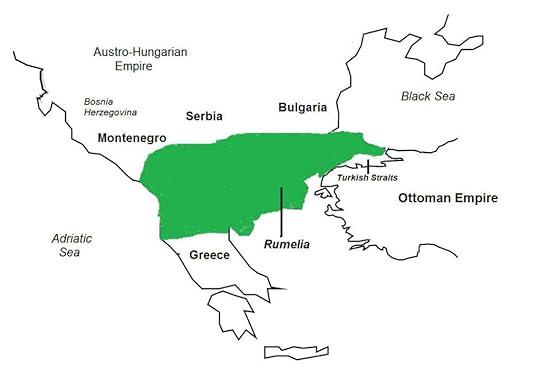
Background TheFirst Balkan War allowed the Balkan League (Serbia,Bulgaria, Greece, and Montenegro) to gain control ofnearly the whole region of the Ottoman region of Rumelia. In the 1913 Treaty of London, the majorEuropean powers recognized the independence of Albania,forcing Serbia, Greece, and Montenegroto withdraw their forces from their respective conquered territories in Albania. Before the war, Serbiaand Bulgariahad entered into a secret agreement to partition Rumelia between them, inparticular the Macedonian region. Nosimilar partition agreement was made with Greece, as the Greek Army was nothighly regarded and thought to be incapable of gaining much territory.
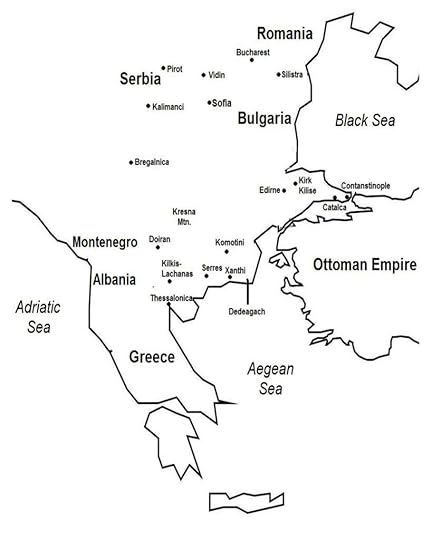
During the war, however, Bulgariahad concentrated much of its military resources in Eastern Thrace aiming tocapture Constantinople, and left a much smaller force to invade Macedonia. As a result, Bulgaria’sallies, Serbia and Greece,both of whom faced much less opposition in their sectors, gained considerable territoryduring the war. Serbian forces advancedinto southern Macedoniapast the so-called “disputed zone” north of the Kriva Palanka-Ohrid Line, whichwas part of the Serbian-Bulgarian pre-war partition agreement. The Greek Army also performed (surprisingly)well and seized a large section of southern Macedoniaand portions of Western Thrace.
The Bulgarians applied pressure on Serbia to withdraw its forces tothe north and beyond Monastir in compliance with their pre-wararrangement. Serbiarefused, as it already had been forced to relinquish northern Albania, while Bulgariahad ceded much less in Eastern Thrace, in theareas of the Enos-Midia Line. Serbia insisted that new negotiations be startedon partitioning Macedonia, aproposal that was rejected by Bulgaria. (In their pre-war agreement, Serbia was allowed to expand freely into Albania, while Bulgariacould take southern Macedonia.)
Bulgariaalso put pressure on Greeceto withdraw from Western Thrace and southern Macedonia, in particular from Thessalonica. The Greeks offered a compromise agreement,which the Bulgarians rejected.
Greek-Serbian Alliance of 1913 As Bulgaria continued its war posturing and increased its forces in the disputed areas, on June 1, 1913, Serbia and Greece secretly signed a mutual defense treaty aimed at countering a potential Bulgarian attack. The agreement also fixed a common border between Serbia and Greece. Consequently, small-scale fighting began to break out between Serbians and Bulgarians, whose forces were situated next to each other following the recently concluded First Balkan War. A small Montenegrin contingent also joined ranks with Serbian forces.
Meanwhile, Russiawas alarmed at the impending break up of the Serbian-Bulgarian alliance, asthis threatened Russia’spower ambitions in the Balkan region. Tsar Nicholas II, the Russian monarch, offered to mediate, even sendinga personal letter to both the Serbian and Bulgarian kings. Bulgaria was unyielding, however,forcing the Russian government to cancel the Russo-Bulgarian Treaty of 1902.
Second Balkan War On June 29, 1913, less than a month after the First Balkan War ended, Bulgaria, without declaring war, launched simultaneous attacks against Serbian and Greek forces in Macedonia. The Second Balkan War had begun.
May 31, 2024
May 31, 1916 – World War I: British and German fleets clash at the Battle of Jutland
On May 31, 1916, the British Grand Fleet and the German High Seas Fleet clashed at the Battle of Jutland, located off Denmark’s North Sea coast. Both sides failed to achieve a decisive victory.
During World War I, Britain imposed a naval blockade of the German coast. The German Navy, being much smaller than the British Royal Navy, could not engage the latter in full-scale combat. Instead, at Jutland, the German plan was to lure, trap, and destroy a portion of the British fleet.
The Battle of Jutland involved some 250 ships and 100,000 men, and was the only major naval surface encounter during World War I. Both sides claimed victory. The British lost more ships and men, and the British press criticized its navy for failing to achieve a decisive outcome. However, the battle was a strategic British victory, since the Royal Navy had forced the German surface fleet to retire to Germany, where it would remain as a “fleet in being”, unwilling to leave port to do battle but persisting as a latent threat. Britain continued to control the North Sea and Germany was denied access to the Atlantic and British shipping lanes. In 1917, the German Navy turned to its U-boats to launch unrestricted submarine warfare aimed at destroying Allied and neutral shipping.
May 30, 2024
May 30, 1913 – First Balkan War: Albania gains its independence
On May 30, 1913, Albania gained its independence from the Ottoman Empire with the signing of the Treaty of London that ended the First Balkan War (October 1912-May 1913). Albania’s sovereignty was reaffirmed in August 1913 in the Treaty of Bucharest that delineated the boundaries of the new state, but which left 30-40% of ethnic Albanians outside its borders.
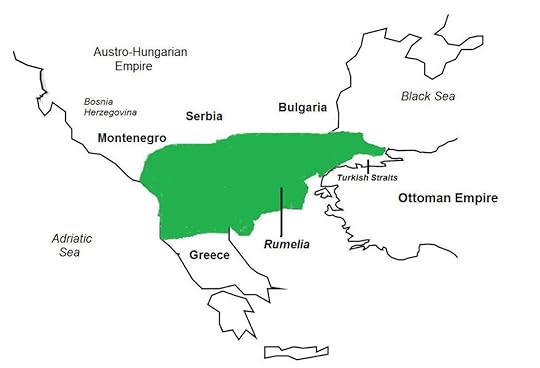
The First Balkan War was fought between the Ottoman Empire and the Balkan League, a military alliance involving Serbia, Bulgaria, Montenegro, and Greece, for control of Rumelia, a broad swathe of Ottoman territory in the Balkans. The Treaty of London, signed on May 30, 1913, officially ended the war. The European powers (Britain, France, Germany, Austria-Hungary, Italy, and Russia) applied strong diplomatic pressure and forced the warring sides to accept the terms of the agreement. The treaty’s most important provision compelled the Ottoman Empire to cede to the Balkan League all European territory west of the Enos-Midia Line.
The Ottoman government acquiesced and withdrew its forces from the Balkans, thus ending nearly five centuries of Ottoman rule. After further deliberations and under the strong insistence of Austria-Hungary and Italy, on July 29, 1913, the European powers agreed to recognize the independence of Albania, where local Albanian nationalists had previously (on November 28, 1912) declared the province’s secession from the Ottoman Empire. As a result, Serbia, Greece, and Montenegro withdrew their forces from occupied areas in Albania, again after being strong-armed diplomatically by the European powers.
The partitioning of other Balkan territories was left to thediscretion of the Balkan League. Nevertheless, the unexpected birth of the Albanian state disrupted theSerbian-Bulgarian pre-war secret partition agreement of the Balkan region. In particular, Bulgaria was disappointed atits less than expected territorial gains in the war, more so in relation toGreece whose forces had performed exceedingly (and surprisingly) well, and hadgained a larger share of the conquered territories in southern Macedonia thatotherwise would have been won by Bulgaria. For this reason, Bulgariaput pressure on Serbia and Greeceto turn over some of the conquered territories, which the latter two refused.
The stage thus was set for the resumption of hostilities, the Second Balkan War.
May 29, 2024
May 29, 1982 –Falklands War: British forces recapture Goose Green
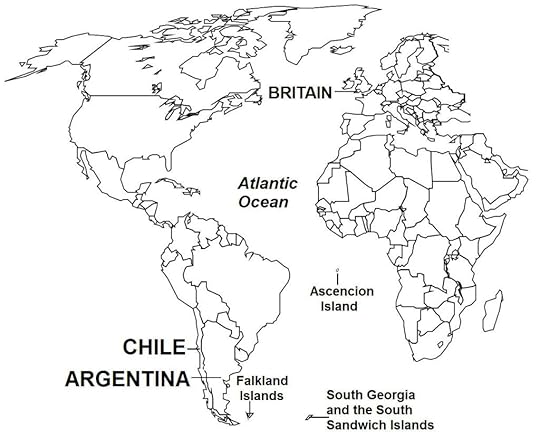
Background On May 21, 1982, some 4,000 British Marines landed at San Carlos Bay. After easily overpowering the small Argentine garrison, the British soldiers secured the landing zone, where British transport ships soon arrived to unload weapons and supplies. The Argentineans carried out many air attacks, sinking the British frigates HMS Ardent and HMS Antelope on May 21 and May 24, respectively, and the destroyer HMS Coventry on May 25. Also badly damaged were the British frigates HMS Argonaut and HMS Brilliant. Many other ships also could have been hit or suffered heavy damage were it not that Argentinean pilots often released their rockets too low, which exploded with little effect or did not detonate on time.
The British incurred heavy losses at San Carlos Bay,but succeeded in completing the landings. However, the loss of a freighter carrying the transport helicopters forthe troops meant that the British ground forces at San Carlos Bay could notbe airlifted to Port Stanley as planned, butwould have to walk the 80 kilometers of open terrain in bad weather to thecapital. The main force of 3,000 troopswas tasked to advance to Port Stanley.
To protect the flank of this advance, some 600 soldiers weresent to capture Goose Green, a village located southwest of San Carlos Bay. British reconnaissance flights indicated thatGoose Green was defended only by a small Argentinean force. The British also noted the presence ofartillery batteries and other heavy weapons. Unbeknown to the British, Goose Green’s garrison contained 1,200soldiers, which outnumbered the British force by a ratio of 2:1. The Argentineans also were positioned on aridge facing the direction of the British advance.
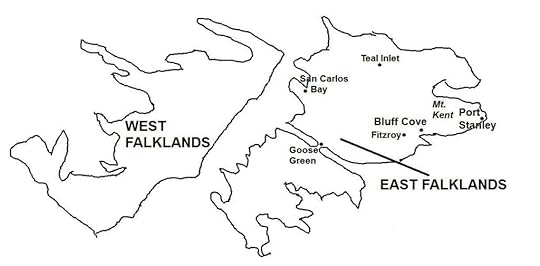
BattleThe battle for Goose Green began onthe night of May 27, 1982 with the British soldiers being pinned down by heavyfire. The following morning, the Britishsuccessfully outflanked the ridge and advanced toward Goose Green. British planes struck at Argentineanpositions, which began to break down. The British ground force then demanded the Argentineans tosurrender. Believing he was facing alarge force, the Argentinean commander surrendered, and Goose Greece came under Britishcontrol. Goose Green became a greatmorale boost to British forces in the Falklandsas well as to the British general public in the homeland.
With their flank secure, the main British force at San Carlos Bay set out for Teal Inlet, located 40 kilometers northwest from Port Stanley. Excerpts taken from The Falklands War.
May 28, 2024
May 28, 1940 – World War II: Allied forces recapture Narvik in northern Norway
On May 28, 1940, Allied forces (Norwegian, French, Polish and British) captured Narvik in northern Norway, with the Germans fleeing toward the Swedish border. The German commander considered crossing into Sweden, where his forces would be interned by the Swedish Army.
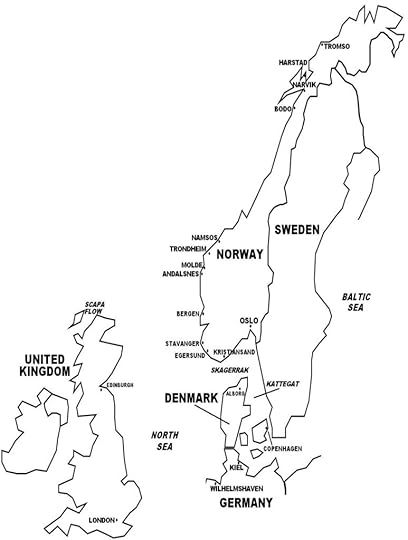 Battle of Norway
Battle of Norway(Excerpts taken from Wars of the 20th Century – World War II in Europe) By then however, Narvik and Norway as a whole had become inconsequential to the Allies because of the dire events now taking place in France. On May 10, 1940, Germany invaded France, and two days later, German forces made a stunning advance through the Ardennes that led to the rapid collapse of Allied resistance and the forced evacuation in Dunkirk of the British Expeditionary Force, as well as some French units, to Britain in late May 1940. By the time the Allies captured Narvik, France was fighting for its own survival, and Britain was gearing up for the defense of the homeland.
On May 24, the Allied High Command decided to evacuate itsforces from northern Norway,and the order for its implementation was sent to the Allied command in Norway, withinstructions to carry out the attack on Narvik as a cover for the Allied withdrawal. On June 7-8, 1940 under Operation Alphabet,British, French, and Polish forces were evacuated from Norway for Britain, together with King HaakonVII, the royal family, and Norwegian Cabinet.
Background TheAllied objective in Narvik was to stop the Germans from capturing the whole of Norway.The Allies had also made landings in central Norway, but these were turned back.By the time of the Narvik landings, the Germans had captured the whole ofsouthern Norway, includingthe capital Oslo, as well as other key sitesincluding Bergen, Kristiansand,and Egersund in the south and Trondheim incentral Norway.With the Allied withdrawal from Narvik, the whole of Norway came under German control.



